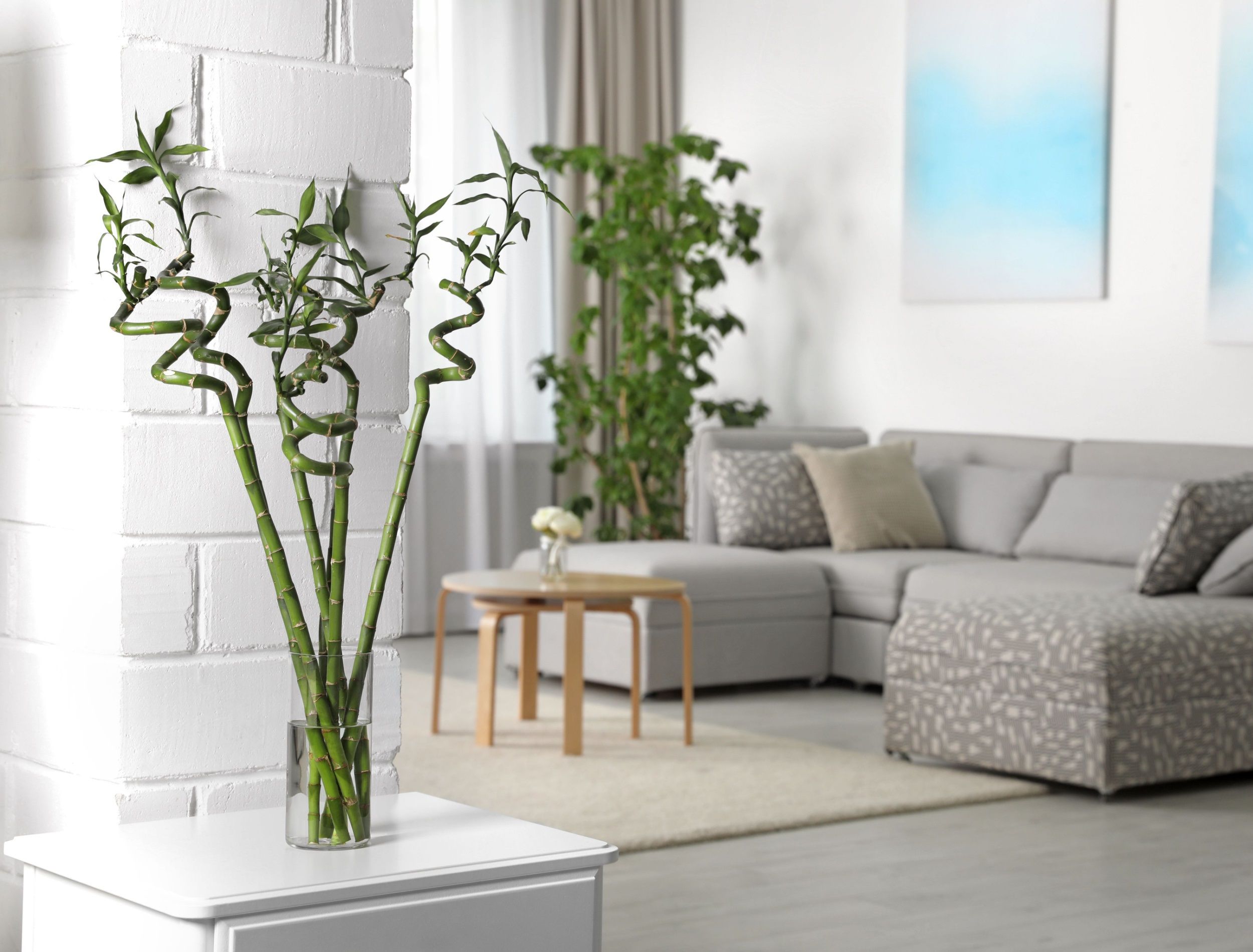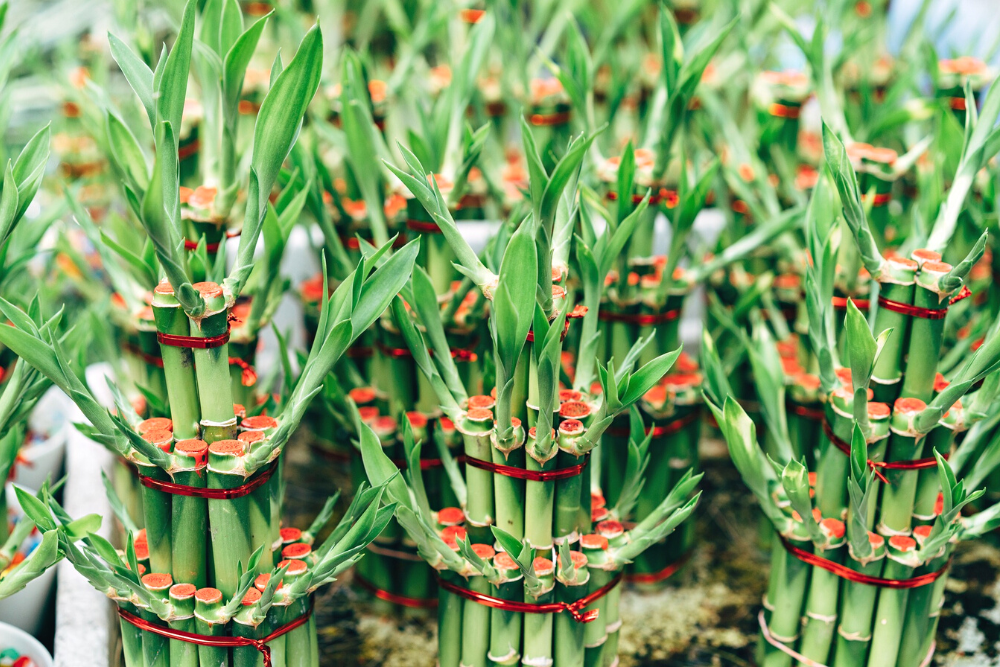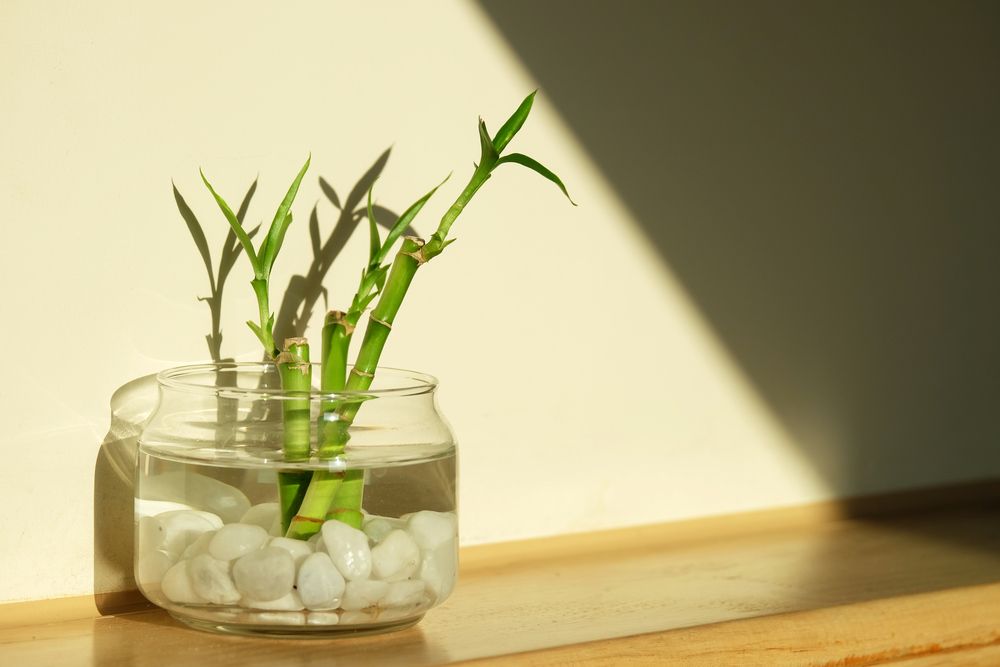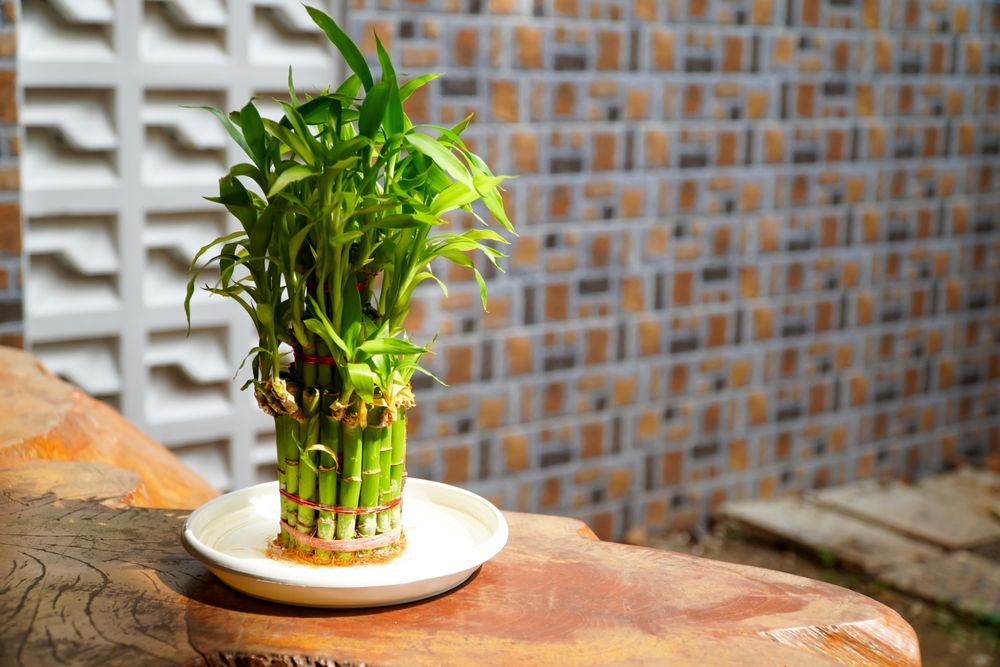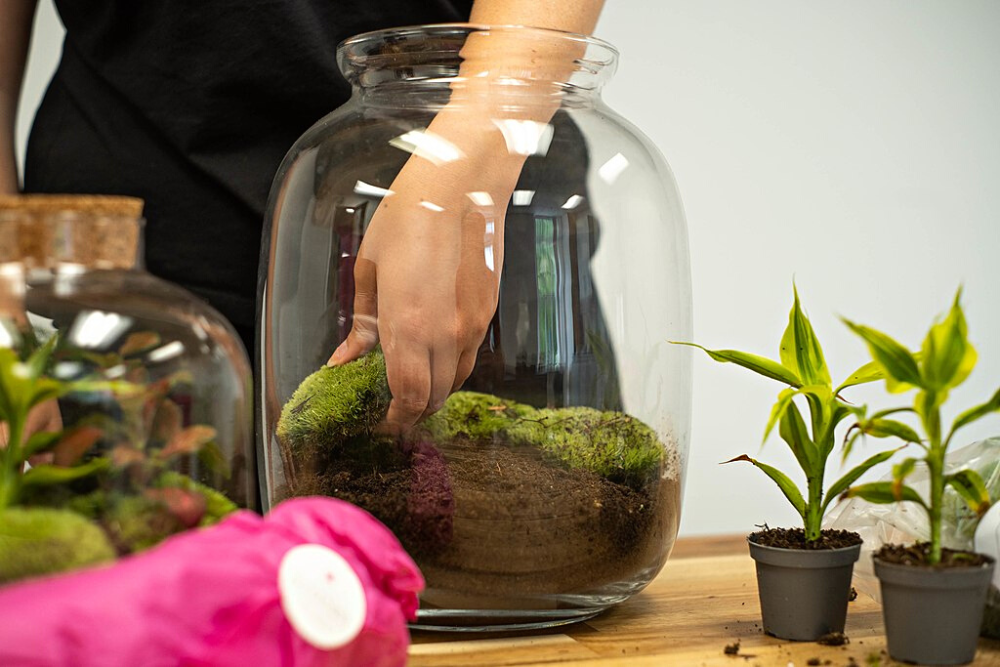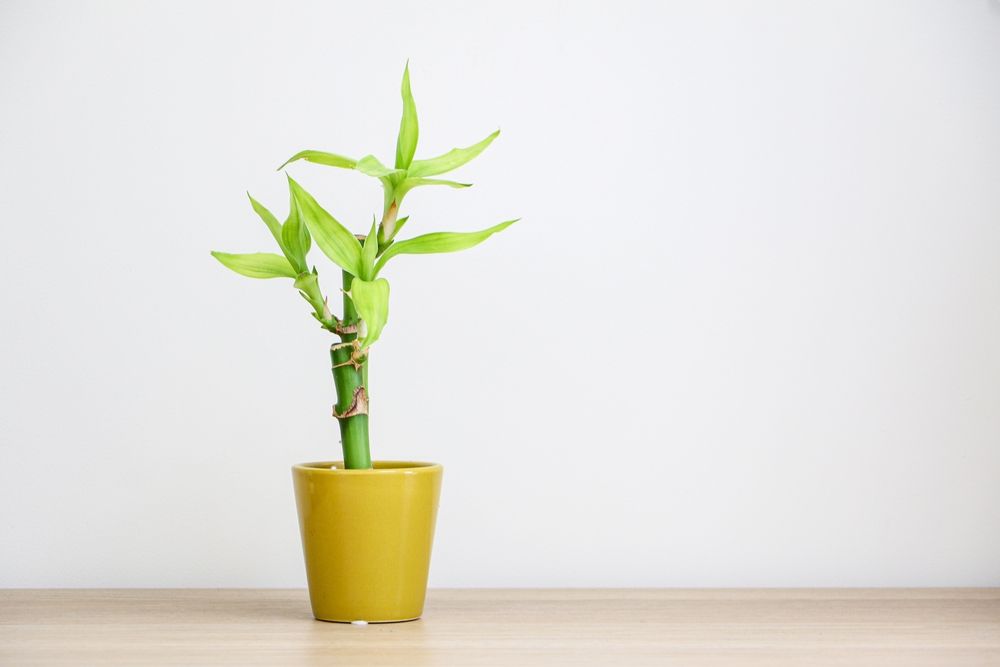While mostly linked to Chinese culture and feng shui, lucky bamboo is native to the African country, Cameroon. Although it looks like bamboo and goes by the name, it isn’t bamboo at all. It is a dracaena plant (Dracaena sanderiana) and its quirky look, toughness, mysticism, and affordability all add to its appeal as a houseplant.
If you typically love lavishly leafed plants, this diminutive darling might not be top of your list to grow indoors. But there are several benefits of having lucky bamboo in your home you should consider.
Easy to Grow
Image credit: viarami via Pixabay
This elegant houseplant, which also goes by the name Chinese water bamboo or Friendship bamboo, can grow to about three feet tall with very little help from you. Its low-maintenance and adaptable nature is one reason why home gardeners love it.
Lucky bamboo grows well either in soil or water. Ideally, the water should be chlorine-free and low in fluoride and salts, meaning no tap water. If you change the water weekly and treat it to a diluted liquid fertilizer every other month, this houseplant can delight in its watery habitat for a year or longer.
Grows Well in Different Lighting
Image credits: Michael Mong via Shutterstock
Poor or low light is a common challenge for many homes. Ideally, you would select houseplants that can flourish under these conditions. However, lucky bamboo is versatile and can grow in bright-indirect, medium, or low light.
Avoid placing it in an area with bright, unfiltered light — for instance, a very sunny windowsill. Watch for scorched leaves, which signal the light in that area is too strong.
On the other hand, when leaves fade or yellow, the lighting is much too low. Simply move the plant to a spot with more light. If you need to use artificial light, choose fluorescent to keep it happy. Also, keep in mind that the plant adapts to its lighting conditions. When relocating it to an area with a different level of light, do so gradually.
Lucky Bamboo Might Help Improve Indoor Air
Image credits: Lakhsmie via Shutterstock
Indoor air can contain two to five times more pollutants than outdoor air. Considering that people spend about 90 percent of their lives indoors, it becomes clear why it’s so important to cleanse the air as much as possible.
Growing plants, like lucky bamboo, is often touted as one way to improve indoor air. However, there is debate about how effective plants are at removing toxins in homes — not their ability to do so, but just how many you would need to make a difference.
Dracaenas are renowned for absorbing toxins such as formaldehyde, benzene, and trichloroethylene. And like all plants, lucky bamboo produces oxygen, essential for overall health and wellness. The only thing is you might need to grow lots of them to reap any significant air-cleansing benefits.
You Can Grow Lucky Bamboo in Terrariums
Image credit: Lucy Serafi via Wikimedia Commons
Made of glass or plastic, terrariums are open or closed containers used to grow very small plants. These fascinating miniature indoor gardens need plants that hold up well to high levels of humidity. Lucky bamboo thrives in humidity 50 percent or higher and wet soil.
Another benefit of lucky bamboo is that you can easily stunt its growth so that it doesn’t overgrow the terrarium. When you purchase a lucky bamboo, you might notice that it has the top of its stalk waxed. This helps to prevent the plant from growing.
If your plant isn’t waxed, cut a small slice off the top. Melt some soy wax and allow it to cool a bit, then dip the top of the bamboo stalk into it and let it cool.
Health Benefits
Image credits: Adam Yee via Shutterstock
Besides boosting oxygen levels in your home and helping to remove toxins — albeit at a low level — lucky bamboo has other benefits for your health.
Growing and caring for houseplants helps to reduce stress and anxiety as well as the risk of depression. Studies also show that indoor plants can help to increase memory, focus, and productivity.
Indoor air can be extremely dry, especially in winter. Dry air exacerbates problems such as allergic rhinitis, contributes to skin aging, and exacerbates conditions such as eczema and psoriasis. Like other houseplants, lucky bamboo releases moisture into the air.
It’s a Good Luck Charm
Image credit: Toushif Alam via Unsplash
As the name suggests, lucky bamboo has the power to attract good luck. It’s one of the most common reasons people grow this houseplant. In the traditional Chinese practice of feng shui, green is considered a lucky color, and bamboo plants are considered lucky.
Depending on how many lucky bamboo plants you grow, you can attract a host of positive energy, or chi, into your life. For instance, grow one stalk for good fortune, two for love, or three for health, wealth, and long life. Five stalks can attract balance, harmony, peace, and power in your life.
However, never grow just four stalks of bamboo, because the number four in Chinese sounds like the word for “death.”
Lucky Bamboo Grows in Aquariums
If you are as passionate about raising fish as you are growing plants, here’s the perfect opportunity to combine the two. Live plants in aquariums help to create a healthier environment for fish to grow.
Lucky bamboo will help to remove nitrates from the water that can kill your fish. Also, nitrates and other nutrients such as iron and potassium allow algae to grow. While some algae are good, an excess of them is not and plants like lucky bamboo can curb the onslaught by absorbing the nutrients they need to flourish.
And, of course, lucky bamboo releases oxygen, which is essential for fish to breathe. Remember that it does need some light, so ensure that your aquarium has enough of it so these plants can thrive.
Start Your Lucky Streak
While there are many benefits of having lucky bamboo in your home, there is one major con. It is not a pet-friendly plant and can cause adverse effects such as vomiting, anorexia, and depression in cats and dogs. So, keep this plant well out of the reach of your fur babies.
Leave your tips and tricks for growing this dracaena in the comments below. Also, share this article with someone you know who is still on the fence about the merits of this low-maintenance lovely.

